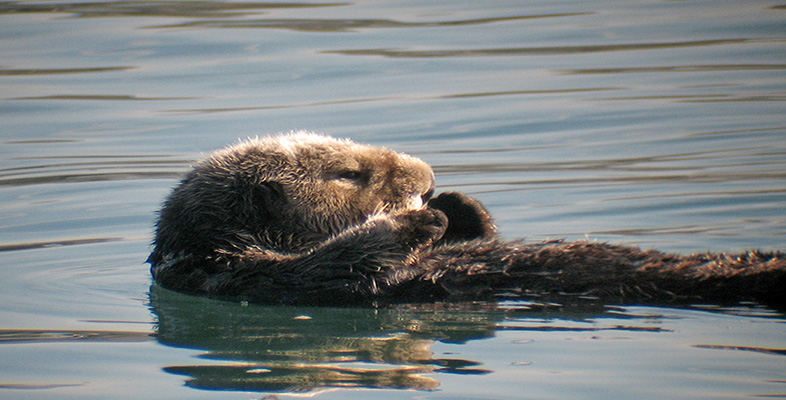2.2 Breathing air
A swimming elephant can breathe by holding the end of its trunk out of the water, but if it tried to find its food under the surface, like the desman, it would have to hold its breath. Neither the mammalian lung nor the skin can extract enough oxygen from water to sustain life, so aquatic mammals must come to the surface at intervals to breathe; and all of them - pinnipeds, sirenians and cetaceans - drown if they are prevented from doing so for prolonged periods.
Lungs form 7% of the body mass of a human being, but no more than 3% of the body mass of most cetaceans - so lung size alone cannot account for their diving abilities. Part of the secret is that aquatic mammals use their lungs more efficiently: they extract more oxygen from the air they take in, and change a higher proportion of the air within their lungs with every breath. For example, we take in about a litre of air with each breath, despite the fact that our lungs can hold over four litres; a fin whale takes in 3000 times that amount in just under two seconds.
It is the ability to fill and empty their lungs so quickly that produces the 'blow' of the larger whales - something so distinctive that it can be used to identify species, even individual whales, far out at sea. The animals pay a price for this efficiency, however. We can obtain extra oxygen by taking deeper breaths; a whale can only breathe more frequently. Whaling ships used to take full advantage of this fact, chasing whales until the exhausted animals were forced to spend more and more time at the surface.
The need to breathe air means that sirenians and cetaceans have to be able to sleep without drowning, as these animals never leave the water. The blow-hole in cetaceans seems to be under voluntary control, which suggests that these animals have to be 'awake' to breathe. Whales and dolphins rest in the water from time to time at or close to the surface, and animals in social groups spend periods swimming slowly side by side ('echelon swimming'). This paired swimming mimics the behaviour of a calf with its mother and is probably associated with rest. It is likely that at these times the animals use a form of 'cat-napping', in which one half of the brain rests while the other remains active.
